Key takeaways:
- Critique sessions foster growth through diverse perspectives, enabling participants to recognize overlooked flaws and enhance their work.
- Embracing vulnerability and openness during feedback allows for transformative experiences and collaborative improvement.
- Preparation for critiques, such as gathering preliminary feedback and adopting a positive mindset, leads to more constructive discussions.
- Applying lessons from critique sessions involves critical reassessment of work and embracing risks, which can spur creativity and innovation.

Understanding critique sessions
Critique sessions are not just about receiving feedback; they are a space for growth and collaboration. I remember my first experience in a critique session, feeling that mix of excitement and anxiety. The thought of others examining my work was daunting, but little did I know, this process would open my eyes to perspectives I had never considered.
During these sessions, it’s crucial to embrace vulnerability. I once shared a design that I felt was my best work, only to hear contrary opinions. Initially, I felt defensive, but then I realized that these insights could enhance my approach. Isn’t it interesting how constructive criticism can spark creativity? Embracing that discomfort has transformed the way I view design and feedback.
The value of critique sessions lies in the diverse viewpoints presented. Each participant brings a unique perspective, which can lead to unexpected revelations. I recall a session where a peer pointed out a design flaw I had overlooked for weeks. If I hadn’t been participating in that critique, I might have repeated the same mistake in future projects, showcasing the importance of collective learning in our industry.
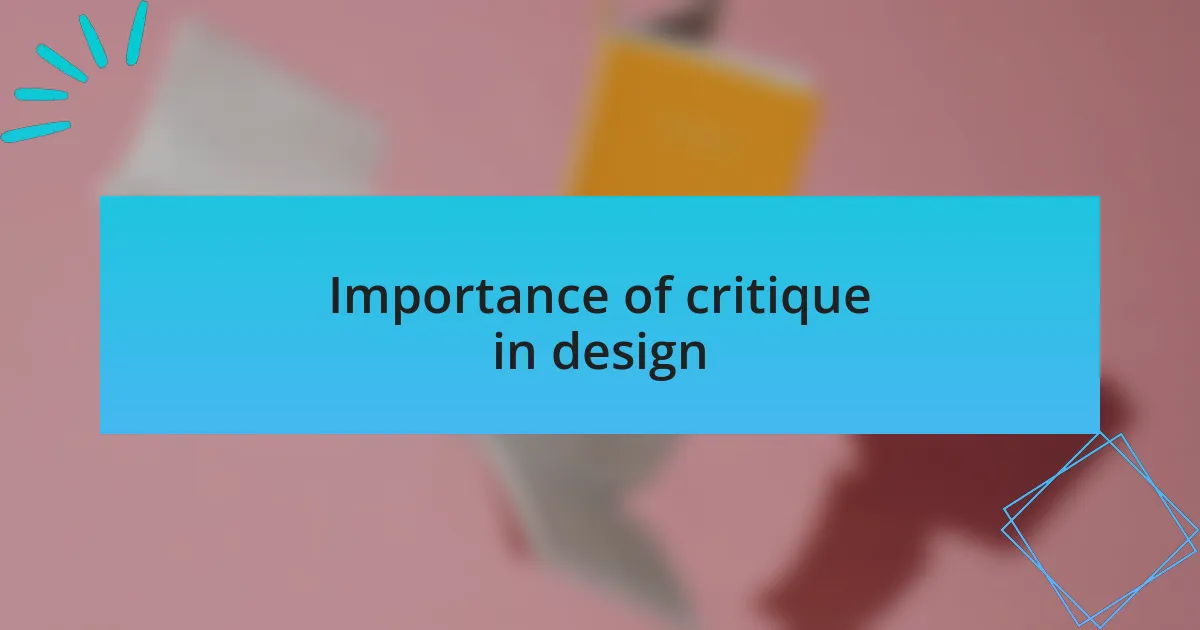
Importance of critique in design
Critique in design is essential because it pushes us beyond our comfort zones. I vividly remember a session where my colleagues dissected a project I was proud of. Their feedback felt like a jolt, revealing gaps I hadn’t noticed. It made me realize that without their insights, I would have settled for mediocrity. Have you ever had that experience where the backlash turns into a catalyst for improvement?
There’s a special kind of magic that happens when different creative minds converge in a critique session. I once sat through a discussion about a brand identity project. One participant suggested a color scheme I had never considered. At first, I was skeptical, but after further exploration, I fell in love with the concept. This fusion of ideas not only enhanced the design but also deepened my appreciation for collaboration.
In the end, critiques foster a culture of continuous learning. I remember feeling a sense of community after a particularly intense session; it wasn’t just about personal growth, but growth as a team. When we address our weaknesses together, we build a stronger foundation for innovative designs. Isn’t it empowering to know that each critique session is a step toward creating something even greater?
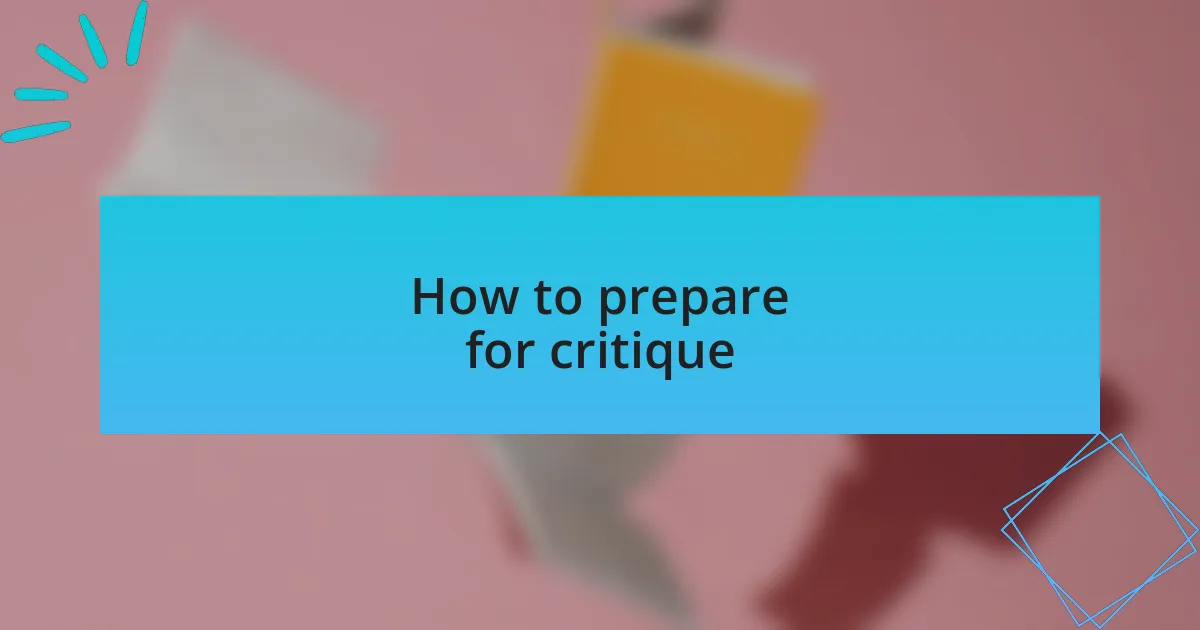
How to prepare for critique
Preparing for a critique session requires intentionality. I always find it helpful to review my work from an outsider’s perspective. One time, I scrutinized a design I was excited about and discovered inconsistencies that I had previously overlooked. Have you ever been surprised by the flaws in something you thought was perfect? This practice not only boosts your confidence but also arms you with questions and critiques that can prompt deeper discussions.
Gathering feedback from peers before the official critique can be an eye-opener. I remember sharing a draft design with a couple of trusted colleagues beforehand, and their insights unveiled areas I hadn’t considered. Their diverse viewpoints helped me refine my ideas and allowed me to enter the session more prepared and open to constructive criticism. Isn’t it refreshing to have a sounding board who understands your vision?
Lastly, setting the right mindset is crucial. Approaching a critique with openness rather than defensiveness has transformed my experiences. I used to dread these sessions, thinking it was all about pointing out flaws. However, shifting my perspective to view feedback as a growth opportunity has been liberating. When was the last time you embraced feedback in a way that led to unexpected growth?
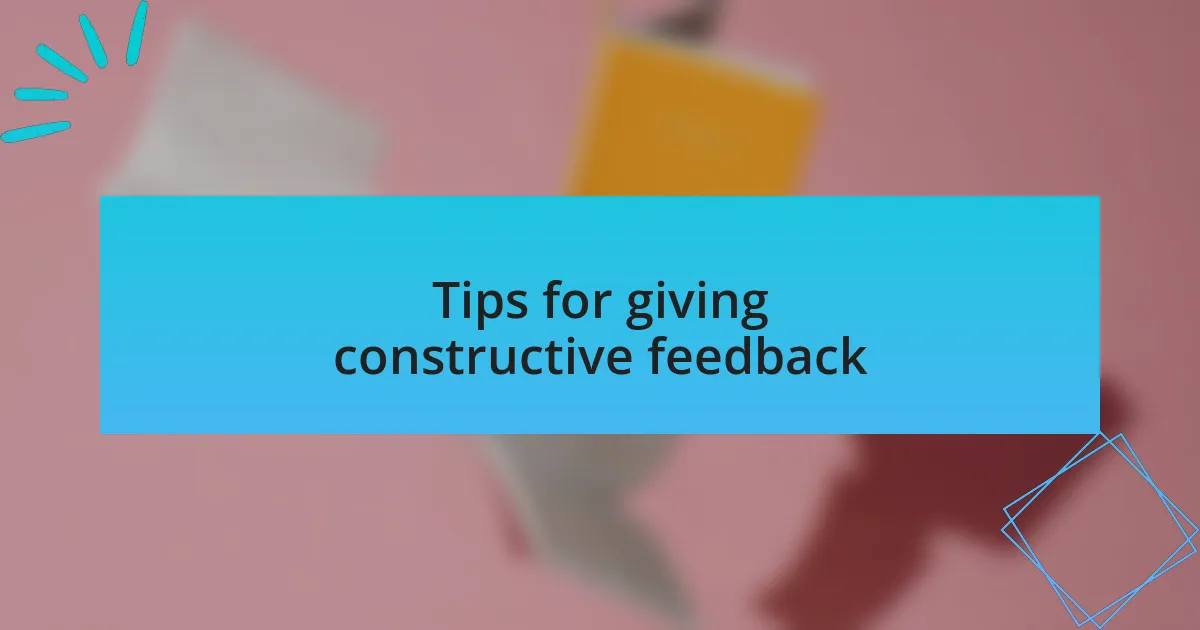
Tips for giving constructive feedback
When giving constructive feedback, it’s essential to frame your observations positively. I remember a time when I noticed design elements that didn’t mesh well together. Instead of simply pointing out the misalignment, I expressed my thoughts by suggesting alternative options that could enhance the overall cohesion. Have you ever felt more encouraged when feedback includes a path forward rather than just a critique?
Be specific about what works and what doesn’t. Vague comments often lead to confusion, as I learned the hard way during one critique session. I mentioned that a color felt “off,” but I didn’t specify why. The designer left the session uncertain about how to improve. Now, I focus on clear, detailed examples, which not only helps the designer understand the feedback better but also fosters a more constructive discussion. Isn’t clarity the key to effective communication?
Lastly, remember to balance your feedback with recognition of what’s working well. It’s human nature to feel disheartened by criticism alone. In one critique, I praised the bold typography while discussing the layout’s challenges. This simple act created a more positive atmosphere and encouraged open dialogue. How often do we overlook the importance of celebrating strengths amidst the critique process?

Techniques for receiving feedback
When it comes to receiving feedback, actively listening is crucial. I remember a critique session where I was so caught up in my design that I missed important insights from my peers. At that moment, I realized how valuable it is to really absorb what others are saying. Have you ever had that experience where you wish you had paused longer to understand the feedback before reacting?
Another technique I’ve found helpful is to ask clarifying questions. During a recent session, a colleague critiqued my use of space, but I felt unsure about their perspective. By asking them to elaborate, I not only gained a clearer understanding, but I also discovered new ideas I hadn’t considered. Isn’t it amazing how a simple question can unlock a deeper conversation and lead to innovative solutions?
Finally, I’ve learned to take a moment to process feedback before responding. There was a time when I immediately defended my choices, which only led to frustration on both sides. Now, I take a deep breath, think it over, and respond thoughtfully. Reflecting before reacting can turn a potentially adversarial situation into a collaborative discussion. How do you manage your initial reactions when faced with critique?
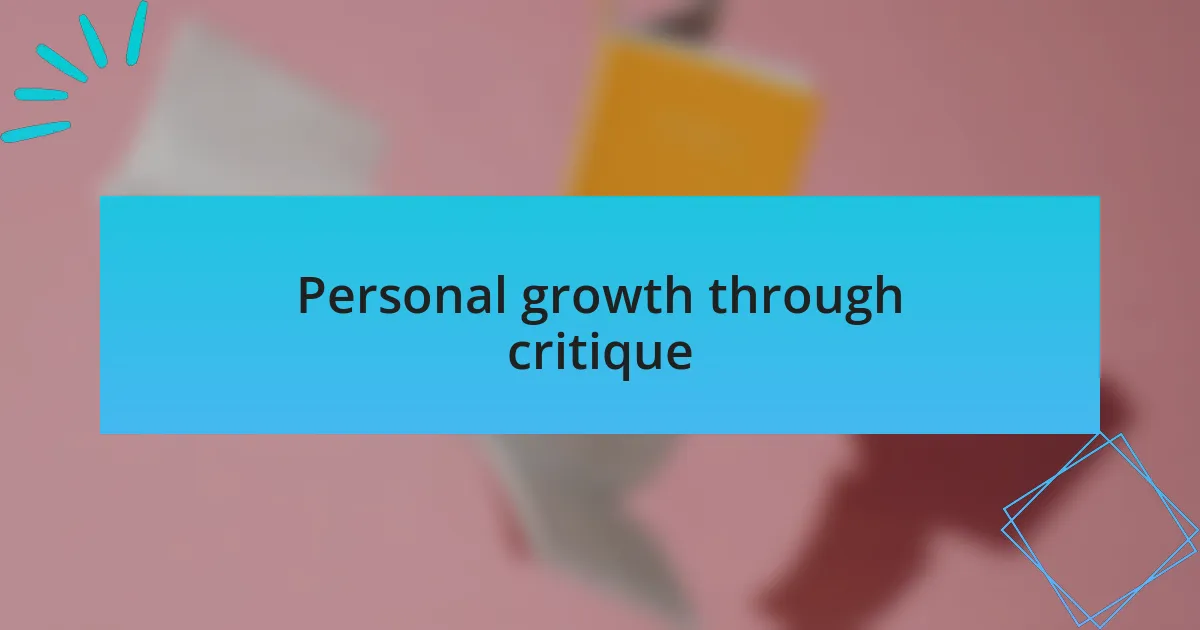
Personal growth through critique
Participating in critique sessions has been a transformative journey for my personal growth. I vividly recall a time when I received feedback that stung; my design approach was questioned in front of the team. Initially, my instinct was to feel defensive, but afterward, I reflected on those comments and realized they challenged me to dig deeper and refine my work. Have you ever found that what feels like personal criticism can actually be an invitation to grow?
As I continued to expose myself to critiques, I noticed an unexpected emotional evolution. I used to dread these sessions, but now I view them as opportunities to stretch my creative boundaries. One particular session stands out when a colleague pointed out the emotional tone of my project could be stronger. Their perspective nudged me to explore and convey emotions more effectively, forever altering how I approached my designs. Doesn’t it feel empowering to transform anxiety into anticipation for new possibilities?
Moreover, I have learned that embracing vulnerability in these settings invites authenticity and deeper connections. There was a day when I openly shared my struggles with a forthcoming project, and instead of judgment, I experienced a supportive wave of ideas and encouragement from my peers. It struck me how, by being honest about my fears, I created a space for collective growth. Have you noticed that sharing vulnerabilities often opens doors to unexpected collaboration?
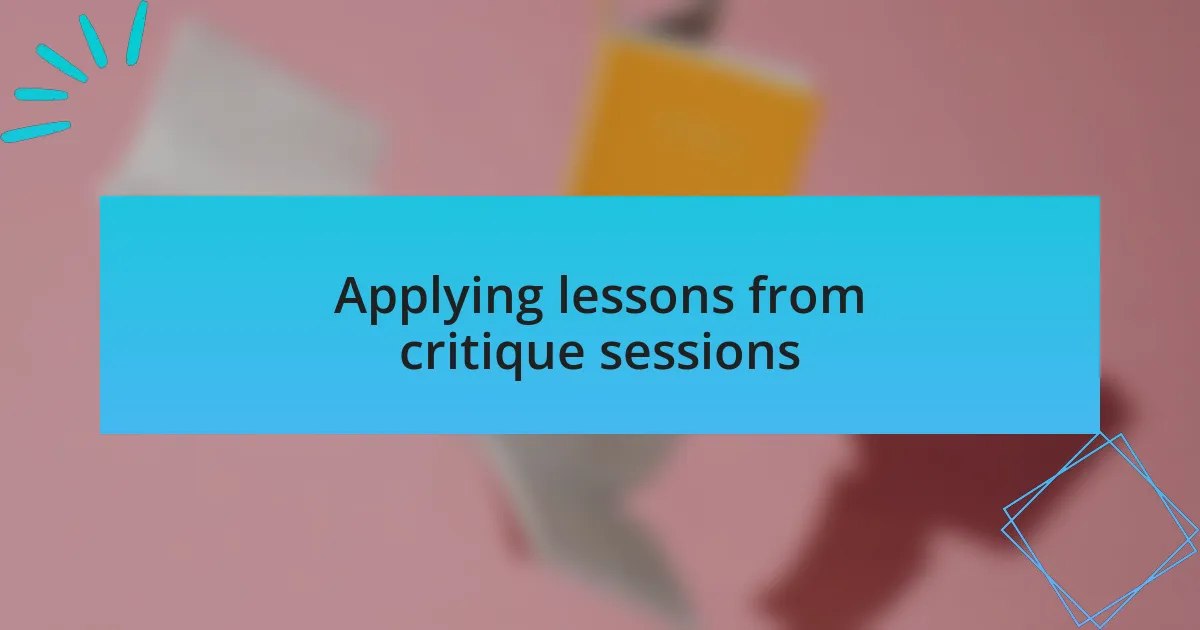
Applying lessons from critique sessions
Applying lessons from critique sessions often means actively changing the way I approach design projects. For instance, during one session, feedback about my color palette felt particularly harsh. Instead of dismissing it, I took it as a challenge to revisit my choices. This simple shift transformed my work and taught me to critically assess each design element with fresh eyes. Have you ever noticed how a slight change in perspective can ignite a wave of creativity?
Over time, I’ve realized the significance of reiteration in applying critique lessons. After absorbing feedback on several projects, I began to document key takeaways in a personal design journal. This practice not only helped me retain valuable insights but also allowed me to track how my designs evolved. Seeing this progression reinforced the idea that critique isn’t just a momentary challenge; it’s an ongoing learning process.
Sometimes, the application of these lessons is about risk-taking. I recall pushing the boundaries of a project by incorporating unexpected elements after a colleague suggested I take a bolder approach. Initially, it felt daunting, but the results surprised both me and my team. The experience taught me that embracing risks often leads to unexpected breakthroughs. Isn’t it fascinating how stepping outside our comfort zones can yield the most rewarding outcomes?